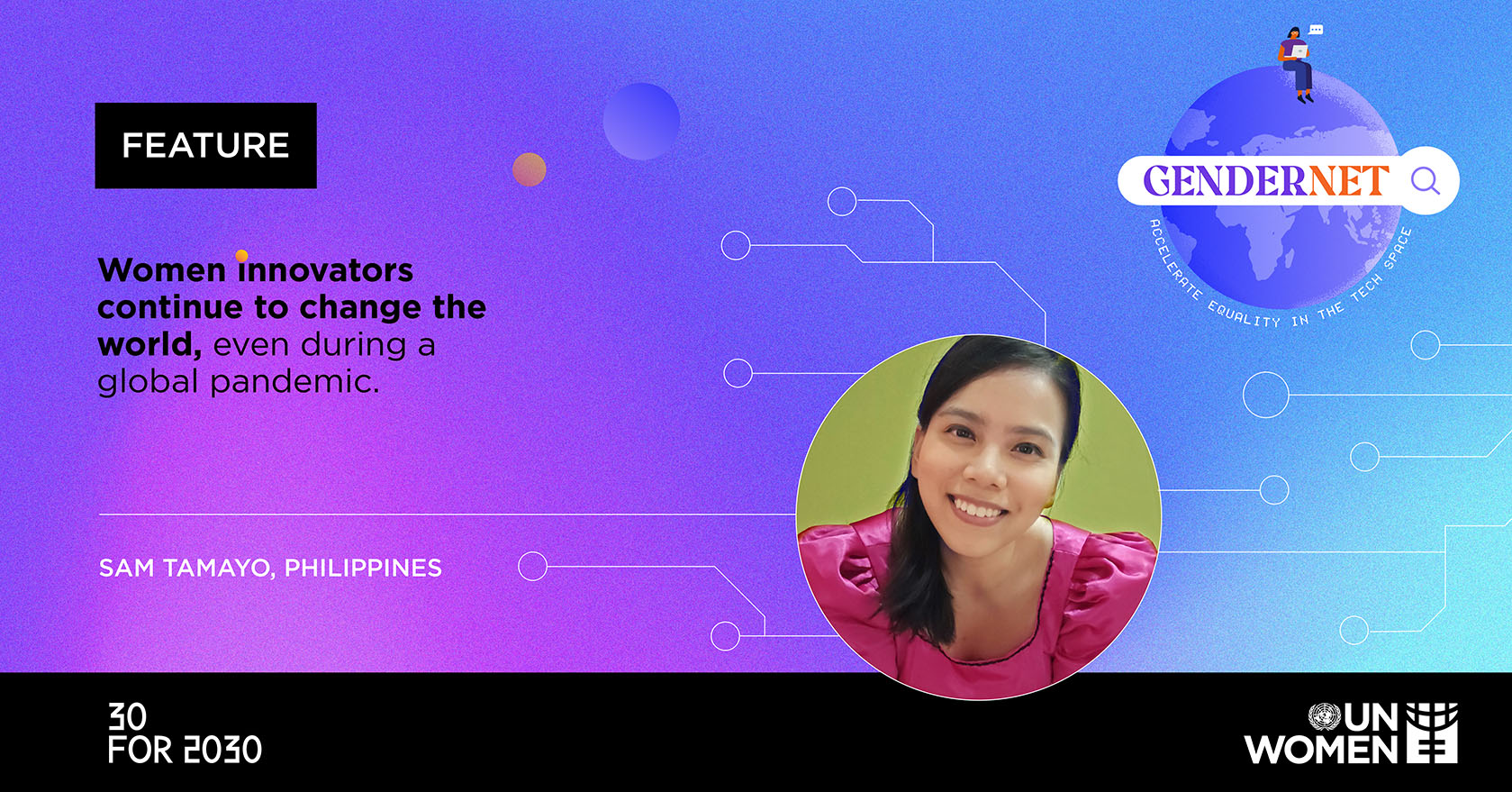This article is part of the GenderNet Campaign, supported by the Changemakers Project: Youth, Technology and Innovation to End Violence Against Women and Girls in Asia and the Pacific (2021-2023) with the generous fund from the Government of the Republic of Korea, through the Ministry of Gender Equality and Family.
From recession to recovery: Innovations introduced by women and girls during COVID-19 and beyond
Date:
Author: Sabrina Melissande Tamayo, 30 for 2030 Network Member

Amid worldwide disruption, the pandemic brought opportunities that some women were able to exploit with remarkable initiatives that benefitted communities near and far, from local food supplies to online learning, to fighting the pandemic itself.
These achievements showcase the potential of women’s inventiveness and leadership in science, technology, economics and maths (STEM), demonstrating the importance of ensuring equal gender access to these fields.
In the Philippines, Ana Patricia Non started the community pantry movement, sharing food from private households for free with community members in need. At its peak, there were more than 6,700 pantries completely run and managed by volunteers. Leveraging the power of social media, Ana continues to advance the welfare of impoverished communities. Recently, she has created a vegetable bouquet wherein the proceeds go directly to farmers - truly a purposeful gift for Valentine’s Day!
Without a doubt, COVID-19 has disrupted societies at an unprecedented depth, breadth, and scale which resulted in the loss of millions of lives and livelihoods and has erased much of the progress made in attaining the Sustainability Development Goals by 2030. In the words of the ILO Director-General Guy Ryder, “We’ve gone backwards big time.”
"[..] this global crisis has disproportionately affected women and girls worldwide,”
— Sabrina Melissande Tamayo, 30 for 2030 Network member
But perhaps more appallingly, this global crisis has disproportionately affected women and girls worldwide, “Across every sphere, from health to the economy, security to social protection, the impacts of COVID-19 are exacerbated for women and girls simply by virtue of their sex.”
However, these circumstances did not hinder their drive and determination. We have seen countless innovations spearheaded by women and girls. Özlem Türeci, the co-founder of the biotechnology company BioNTech, is a shining example that women can flourish in STEM. Her organization developed the first approved RNA-based vaccine against COVID-19. Now, BioNTech is focused on delivering more ground-breaking therapies, including the commencement of cancer vaccine trials in the UK.
In India, female edtech founders Dayal Basuray and Sheetal Kapoor kept young kids educated and entertained through their virtual show called Ask Me Anything. It enabled them to interact with various professionals such as authors, car designers, palaeontologists, and wildlife photographers. Their company, Brainologi, continues to equip children to become independent thinkers and learners through their platform.
While these initiatives are inspiring and meaningful, there must be active and concerted efforts for them to be sustained in the years to come. To start off, capacity-building programmes aimed at encouraging young girls and women to develop critical thinking and practical knowledge should be co-designed by academic, private, public, and civil sectors. Doing so will ensure that perspectives from a diverse range of stakeholders are taken into account and incorporated accordingly.
"They need the proper structure, support, and spaces to flourish. ”
— Sabrina Melissande Tamayo, 30 for 2030 Network member
An example of this is WiTech, a global non-profit that inspires girls and women to break gender barriers through a series of activities such as WiTalks, featuring stories of women making a difference in technology; WiTeach, outreach activities that give young people, regardless their socio-economic status, a glimpse of STEM fields; and WiTCon, a one-day event that exposes students and educators to a wide array of women-led research and accolades in STEM.
Moreover, financial and mentorship opportunities should be more widely available to grow their networks and resources. Globally, only 2.3 per cent of funding from venture capitalists went to women-led start-ups in 2020. Furthermore, 48 per cent of women in one survey said a lack of competent advisors was holding them back in their entrepreneurial journeys.
Meanwhile, a study confirmed that straight, nondisabled white men are more likely to receive professional respect, higher salaries, and greater career opportunities compared with their counterparts in STEM fields. These issues need to be addressed soon for gender equality to be achieved.
Across the world, there are international initiatives that seek to address these barriers such as Female Founders Fund, Women in STEM Mentorship Program, and Women TechEU. However, there should be more work into incorporating these at the grassroots and institutional levels to maximize their scope, reach, and impact.
In conclusion, women and girls are more than capable of excelling in STEM-related ventures. They need the proper structure, support, and spaces to flourish. Because without a doubt, increasing the representation of girls and women in STEM now and in future generations will not just benefit them alone, but will be hugely instrumental for all of humanity.